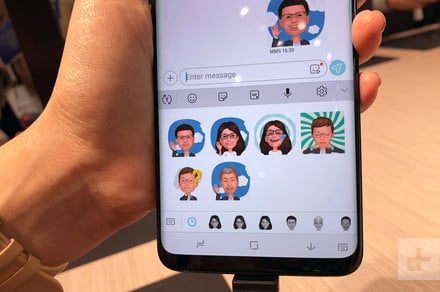Brenda Stolyar/Digital Trends
Language is always evolving, and the prime example of this in the digital age is surely the rise of emoji — the little cartoonish pictograms that adorn text messages, emails, even pictures these days. Every year brings a new wave of tiny, emotive drawings. Originating in Japan in the late ‘90s, emoji are now everywhere, a universal language that crosses devices, operating systems, and international borders. No matter what country you are from or language you speak, you can recognize the jubilance in the “Face with Tears of Joy,” or that the person sending you an eggplant emoji is hankering for some eggplant parmesan right now.
Emoji can convey a wide range of sentiments, but what if you want something specific, something not available among the typical slate of emoji? It is possible to make your own emoji, albeit with some restrictions. Here’s how.
Use a messaging service that allows for custom emoji
If you use a messaging app like Discord or Slack — the former is popular with people playing multiplayer video games, while the latter is used by a lot of businesses for internal communications — then you may be happy to learn that adding your own emoji is a simple process.
To add an emoji, you first need to actually create one. Messaging services will typically have restrictions — on Slack, which we’ll be using to demonstrate, emoji can be no larger than 64KB, and neither the height nor width can exceed 128 pixels.
Open the image-editing software of your choice (for example, the free, web-based Pixlr).
If you’re confident in your artistic skills, you could make an emoji using the tools provided in the program. For a traditional emoji look, start with a yellow circle using a shape tool. Note: Use a transparent background, so the emoji will show up seamlessly against any background.
Then, add features like a mouth and eyes using tools like the pencil or shape tool.
If you’re looking to make an emoji out of a currently existing image, the process is simple. First, find a picture you want to make into an emoji, such as a picture of Nic Cage in the movie Con Air.
Rich Shibley/Digital Trends
Open the image in your photo-editing software. Using the lasso tool, trace along the edge the future emoji.
Once you’ve made a complete circuit, cut the selection (CTRL + X), then create a new image (and preferably make the background transparent, so the emoji will look good against any chat background).
Paste the image into this new window.
Make any remaining edits you might want, then save the image as a PNG (so as to preserve the transparent background).
However you end up creating your emoji, once you’ve saved it, open up your messaging app (in this case Slack).
Click the emoji button, then scroll down until you see the link labeled add custom emoji here. Click it, then upload your image file and give the emoji a name.
On Discord, find the server you want to add an emoji to, then open the drop-down menu in the upper left …
… and select Server Settings.
Next, click Emoji, then click the Upload Emoji button.
Note: You’ll need permission within the server to upload emoji. If it’s a server you created, you’ll automatically have that, but if the server’s creator has placed restrictions on who can upload, you’ll have to talk to them.
The next level: Make a pitch to the Unicode Consortium
Uploading emoji to services like Slack or Discord is easy, but you might be wondering how to get your emoji into the company offered by major platforms like iOS and Android. As it turns out, the set of emoji that users find on just about every device (including such classics as “smiling face with sunglasses” and “zipper-mouth face”) is actually regulated by a group known as the Unicode Consortium. Unicode is a widely accepted standard for encoding text on electronic devices, ensuring that texts sent from a device will show up properly on the receiving end, no matter the make or model.
The consortium maintains a carefully controlled list of approved emoji. If you want your emoji creation to show up in this prestigious catalog, you’ll need to submit a proposal to the selection committee. The committee judges emoji based on a number of factors; aspiring emoji artists must take into account how frequently people would actually use the new emoji, how distinct the image is, and whether it fills a niche that other emoji currently aren’t. (Emoji can’t be specific people or brands, so our Nic Cage emoji is dead on arrival, sadly.)
The full requirements for making a proposal are available on the Consortium’s site.
Editors’ Recommendations
- Everything you need to know about Discord, the chat app for gamers
- Mark your calendars — more than 150 new emojis are coming on June 5
- To celebrate World Emoji Day, Apple debuts over 70 new emojis coming to iOS 12
- Emojis could change the way you use maps on your phone
- How to remove the background from an image

